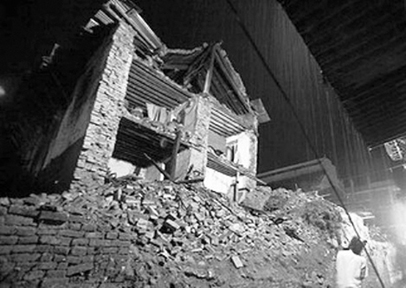Engineering
 The
recent earthquakes in Nepal and PNG have once again demonstrated how
vulnerable we are in the face of nature's fury. The Nepal earthquake was
especially devastating, killing nearly 8,000 people and thousands remain
unaccounted for. Nepal sits right where the Indo-Australian Plate is
pushing itself beneath the Eurasian Plate, a collision that gave rise to
the Himalayan Mountains. As the plates push, pressure builds, eventually
resulting in a quake to relieve that pressure. Matters worsened because
Nepal is a landlocked country with only road and air access and the
mountainous terrain in most areas makes it nearly impossible to reach
and engage in relief work. The
recent earthquakes in Nepal and PNG have once again demonstrated how
vulnerable we are in the face of nature's fury. The Nepal earthquake was
especially devastating, killing nearly 8,000 people and thousands remain
unaccounted for. Nepal sits right where the Indo-Australian Plate is
pushing itself beneath the Eurasian Plate, a collision that gave rise to
the Himalayan Mountains. As the plates push, pressure builds, eventually
resulting in a quake to relieve that pressure. Matters worsened because
Nepal is a landlocked country with only road and air access and the
mountainous terrain in most areas makes it nearly impossible to reach
and engage in relief work.
The South Asian response to the Nepal earthquake was swift and
generous. Sri Lanka was one of the first countries in the world to
respond to the disaster, sending a relief team as well as dry rations
and equipment for the survivors. Incidentally, this was the first time
that a Sri Lankan Air Force plane was used to ferry a relief team and
relief goods to a foreign land.
Border
India was also very swift with its response, being the closest
neighbour with an open border to the Himalayan Kingdom. China, another
country which shares a border with Nepal, also sent relief teams
quickly. Other countries around the world have also joined in the rescue
and relief efforts, though any chance of anyone surviving the quake
buried under the rubble for more than a week is rather slim.
In the light of this disaster, it is imperative for South Asian
nations to come together to handle natural calamities. The South Asian
Association for Regional Cooperation (SAARC) must take the lead in this
regard - coincidentally, the SAARC Secretariat itself is located in
Kathmandu, Nepal. SAARC already has a food fund and a development fund.
It should also have a unified body and mechanism to coordinate efforts
to handle disaster relief efforts.
This is essential because all SAARC countries are prone to natural
disasters. The Maldives faces the danger of rising sea levels due to
climate change, Bangladesh and Sri Lanka experience frequent floods,
India and Pakistan too have faced big earthquakes and of course, we
cannot forget the Indian Ocean tsunami of 2004 which killed around
50,000 people in the region.
|

Earthquake aftermath pic courtesy: Voice of Toronto |
The SAARC countries must invest more in weather research equipment,
capacity and personnel. There is a tsunami warning system in place that
has worked fairly well in the few instances that tsunami alerts were
issued for this part of the world. But more sophisticated facilities and
equipment are needed to predict other calamities such as cyclones,
droughts and floods. SAARC should have its own weather satellite system
that will make this task easier. All SAARC countries could fund such an
initiative and the meteorological institutions of the SAARC nations must
be linked in real-time to make use of the massive amount of weather
data.
Research
SAARC universities too should intensify natural disaster research
collectively and individually. In most other advanced countries,
universities play a crucial role in weather research in addition to the
weather bureaus and forecasters. The media too can play a major role in
this exercise - Sri Lankan television channels pay scant attention to
the weather, whereas foreign channels devote a considerable amount of
time for weather forecasting. In fact, there are many people who depend
on foreign TV channels and websites to know about the weather in Sri
Lanka.
The only hitch with predicting natural disasters is that earthquakes
cannot be predicted in advance with any accuracy. The latest systems can
apparently provide a very brief head-start but that hardly allows any
time for warning and evacuation. Scientists around the world are
striving to develop systems that can warn about impending earthquakes at
least several hours early. They can however predict tsunamis and their
spread fairly accurately. But earthquakes that may trigger tsunamis in
the first place are still difficult to predict. Right now, scientists
study fault lines and seismic activity to reckon the possibility of an
earthquake - in fact, at least one team of researchers warned just weeks
ago that a major quake was due in the exact location where the Nepali
earthquake struck.
Scientists are trying to learn more about the "Sixth Sense" that most
animals apparently possess when it comes to natural disasters. For
example, not a single animal in the Yala National Park was killed in the
2004 tsunami, as they had all fled further inland at least 15 minutes
before the first wave struck the shore. Scientists believe that we too
may have possessed such skills in the very early days of human evolution
but eventually lost them as the brain developed and we depended more on
vision.
Hidden
In the far future it might be possible to 'switch on' those genes if
they are hidden now. In the meantime, learning how animals get a
forewarning may help us to comprehend the relevant biological processes
at work.
Scientists and engineers are also striving to build more earthquake
resilient homes and buildings. There is even a new name for this science
- earthquake engineering. Geologists, seismologists, geotechnical
engineers, and earthquake engineers are coming together for this
purpose.
Since several tremors have occurred in Sri Lanka in recent times, the
national Building Research Organisation and other scientists must do
more research in this area.
Already, some of the tallest buildings in the world such as Taipei
101 have been built with earthquakes in mind. They may be able to
survive even a big earthquake but there is no guarantee of complete
safety. It is even more important to ensure earthquake safety for
residential buildings and homes and for infrastructure facilities such
as hospitals, roads and bridges. Earthquake disaster movies such as the
upcoming San Andreas (starring Dwayne Johnson) portray extreme damage to
entire cities, but if an earthquake is not too powerful, at least some
of the facilities could survive intact. A lot more research has to be
done in respect of earthquakes. We may not be able to 'stop' earthquakes
per se with current levels of technology, but with advance warning the
damage could be minimised. |

